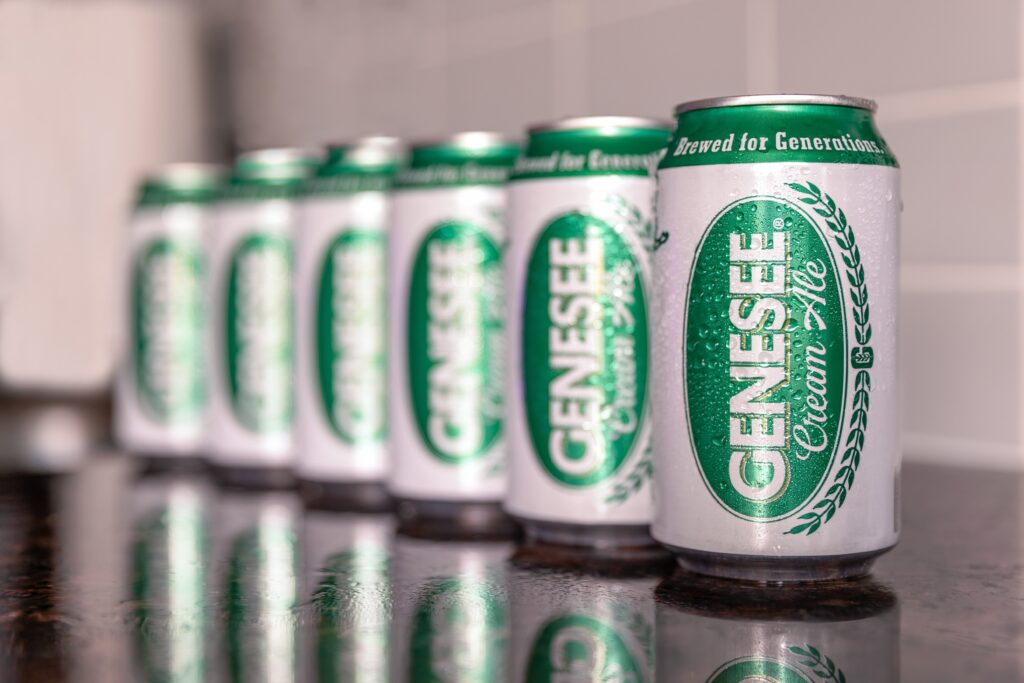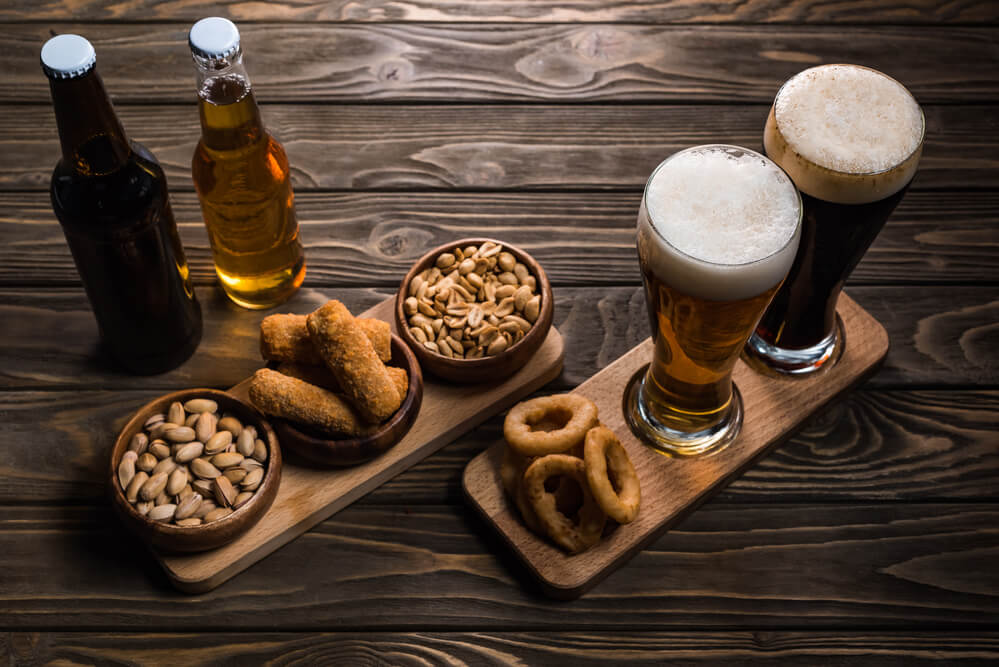What is Cream Ale? In this article, you will learn interesting facts about Cream Ale.
Cream ale is a unique style of beer that has its roots in America. This hybrid beer, often considered the bridge between ales and lagers, was born in the mid-1800s when American ale brewers started losing business to the increasingly popular German lagers. In an effort to create a beer with mass appeal, brewers developed cream ale as a response to consumers’ changing preferences. This creation process involved using both ale and lager yeasts, brewing it warm like an ale, and cold-fermenting it like a lager, giving cream ale its distinct characteristics source.
Despite the name, there is no actual cream in cream ale. Rather, the term refers to its smooth and creamy texture, which has become a hallmark of the style. Cream ale gained a significant following in the United States before Prohibition in the 1920s, and its production subsequently moved to Canada, where it experienced further refinement source. Today, cream ale is enjoyed all over the world, and many breweries have put their unique twist on this versatile beer, making it a favorite among beer enthusiasts.
Table of Contents
History of Cream Ale

Cream ale, often considered an American original, has an interesting history that is intertwined with the evolution of American brewing. Developing during the mid-1800s as a result of American ale brewers trying to compete with the increasing popularity of German lagers, cream ale has managed to maintain its appeal over the years.
In its early days, cream ale was brewed primarily in Rochester, New York, with many American brewers, including those of German heritage, looking for ways to differentiate their beer offerings from the traditional ales and lagers. Many of these brewers found a way to create a new style, cream ale, which combined the characteristics of both German lagers and English ales. This unique fusion of brewing traditions led to the creation of a light and refreshing beer with a straw-to-pale golden color and subdued malt flavor, as mentioned on Wikipedia.
During the pre-prohibition era, cream ale’s appeal continued to grow due to its easy-drinking nature and the reduced fermentation time that made mass production more manageable. However, the advent of prohibition in the 1920s caused a significant decline in the production of cream ale and other beer styles. Despite this setback, cream ale managed to survive and eventually regained its popularity after the end of the prohibition era, as elaborated in Truly Experiences.
Today, cream ale still stands as a symbol of American brewing innovation, blending the best of both lager and ale traditions and paying homage to the contributions made by German immigrants to the American beer scene. It remains a popular choice for those who appreciate its interesting history, smooth drinkability, and distinctive character.
Cream Ale Characteristics
Cream ale is a unique style of beer with a refreshing and crisp taste. It is often described as having a light, golden color and a smooth, drinkable texture. The name “cream” in its title might lead you to believe there is actual cream or creaminess in the beer, but it actually refers to the silky flavor or richness of this beverage source.
In terms of appearance, a cream ale typically has a pale to golden hue with good clarity. The beer might have a moderate to low head and a gentle carbonation. As you visually examine a cream ale, you might notice the presence of lively bubbles rising to the surface, adding to its refreshing and light appeal.
When it comes to aroma, cream ale often has a subtle and inviting scent. You might detect a hint of malt sweetness, along with a delicate note of hop aroma. The overall fragrance is typically mild, allowing the beer to maintain an approachable character.
As you taste a cream ale, you’ll likely discover a balanced and mild flavor profile. Light malt sweetness might be present, complemented with a low to medium hop bitterness. Sometimes, the beer can have a slight fruity character from the yeast, adding a pleasant layer of complexity to the overall taste.
Mouthfeel plays a crucial role in defining the cream ale experience. This beer style is generally light-bodied and crisp, with a smooth and refreshing finish. The carbonation levels contribute to the easy-drinking nature of cream ale, making it enjoyable in various settings, from social gatherings to casual sipping on a warm day.
In conclusion, cream ale is an interesting and approachable beer style with various characteristics that make it an enjoyable and refreshing option for beer lovers. Don’t let the name fool you; this silky and flavorful beer is perfect for those who appreciate a crisp, light-bodied ale.
Ingredients and Brewing Process
Yeast Selection
Cream ale is an interesting beer style, as it combines elements of both ales and lagers. It typically uses a lager yeast strain fermented at higher temperatures, usually associated with ale production. This unique approach results in a clean, crisp beer with a subtle fruity character derived from the yeast.
Adjuncts
The grain bill of cream ale is fairly simple, consisting mostly of pale or pilsner malts. However, adjuncts such as corn and rice make up a significant portion of the bill. These ingredients help to create a light, crisp flavor profile while keeping costs down. Corn, in particular, is a common adjunct in cream ales, lending a subtle sweetness and contributing to the style’s signature mouthfeel.
| Adjunct | Contribution |
|---|---|
| Corn | Sweetness, mouthfeel |
| Rice | Lightness, crispiness |
Fermentation
The fermentation process for cream ale is unique, as it involves both ale and lager fermentation techniques. After the initial fermentation is complete, the beer is typically cold-conditioned, similar to lager brewing. This helps to create the crisp, clean profile that defines the style.
During fermentation, it is essential to control the temperature closely, as this will have a significant impact on the final flavor of the beer. The general guidelines for a cream ale fermentation are as follows:
- Initial fermentation temperature: 60-68°F
- Cold conditioning temperature: 32-40°F
In terms of bitterness, cream ales generally have a low IBU (International Bitterness Units) ranging from 8 to 20, which contributes to their smooth, easy-drinking nature. Hops used in cream ale are usually of the floral, herbal, or spicy variety, providing a delicate balance with the light malts and adjuncts.
To summarize, the unique ingredients and brewing process of cream ale result in a beer that combines the clean, crisp profile of a lager with the subtle fruity character and smooth mouthfeel of an ale. Through the use of lager yeast, adjuncts like corn and rice, and carefully controlled fermentation, cream ale showcases the versatility and creativity of the brewing world.
Cream Ale Varieties

Cream ales are known for their unique balance, combining flavors from both ales and lagers. In this section, we will discuss different varieties of cream ales, focusing on American Cream Ale, Imperial Cream Ale, and Sparkling Ale, showcasing their distinct characteristics.
American Cream Ale
Arguably the most famous example, the Genesee Cream Ale originated in Rochester, NY, in 1960. This particular variety blends the characteristics of both ales and lagers, imbuing it with a smooth and refreshing flavor. American cream ales are typically brewed using a combination of ale and lager yeasts. Although it is called “cream ale,” there is no cream involved in the brewing process; the name is more likely derived from the silky flavor or the richness of the beer.
Imperial Cream Ale
For those who prefer a bolder, more robust taste, Imperial Cream Ale is an excellent choice. Imperial Cream Ales are the up-scaled version of the American Cream Ales, known for their higher alcohol content and more pronounced flavors. This variety is usually brewed with a stronger malt profile and amplified hop presence, keeping the underlying characteristics of the traditional cream ale at its core while taking the entire experience up a notch.
Sparkling Ale
A lesser-known cousin of the cream ale family is the Sparkling Ale. This particular style shares some similarities with Kölsch and pale ales, offering a clean and crisp flavor. Sparkling Ale is brewed using top-fermenting ale yeast, setting it apart from pale lagers. The key differentiator of Sparkling Ale is its effervescence, with higher levels of carbonation giving the beer a lively feel on the palate. Despite the name, it should not be confused with champagne or any other sparkling beverage; Sparkling Ale remains true to its beer roots.
As you explore the world of cream ales, you’ll find each variety has its own unique charm. Whether it’s the easy-drinking American Cream Ale, the bolder Imperial Cream Ale, or the effervescent Sparkling Ale, there’s sure to be a version of this delightful style that suits your preferences.
Notable Cream Ales and Breweries
One of the best-known Cream Ales is the Genesee Cream Ale by Genesee Brewing Co. Founded in Rochester, N.Y., their Cream Ale was introduced in 1960. It is currently a popular choice for people seeking a light, refreshing, and drinkable beer.
Another notable name in the world of Cream Ales is the Cali Creamin’ Creamsicle by Mother Earth Brewing Company. This innovative twist on the traditional Cream Ale style combines hints of orange, providing a unique and smooth drinking experience.
Carton Brewing Company has also made a name for itself with their modern interpretation, known as Carton of Milk. This version is styled as a Sweet Cream Ale with a touch of lactose, which can appeal to a broader audience with its dessert-like flavor profile.
Of course, we cannot forget the New Glarus Brewing which is known for its Spotted Cow Cream Ale. Its popularity is mainly attributed to its combination of a crisp and light body with fruity notes, making it an excellent choice for those who appreciate the subtle complexity of Cream Ales.
Last but not least, the Dogfish Head Craft Brewery also has an interesting take on Cream Ales with their Cantomagatron. Blending old-school techniques with experimental hop varieties, it showcases their ability to push the boundaries of the style.
As the popularity of Cream Ales grows, so does their presence in competitions. Several Cream Ales have made their mark at high-profile beer events like the Great American Beer Festival and have been recognized by organizations like the Beer Judge Certification Program. These recognitions are a testament to the many innovative brewers who continue to evolve Cream Ale as a style.
In summary, while Cream Ales have a relatively simple base, breweries like Genesee, Carton Brewing, and New Glarus Brewing, among others, continue to breathe new life into this classic beer style by integrating unique flavors and techniques. As the beer world further embraces these refreshing and drinkable brews, we’re sure to see more innovative takes on this classic style in the years to come.
Pairing Cream Ale with Food

Cream ale, known for its refreshing and light-bodied nature, makes it an ideal beverage to enjoy with various types of cuisine. Its mellow flavor profile allows it to complement a wide range of dishes without overpowering them.
Light-bodied cream ales pair exceptionally well with light, summery dishes. A perfect example of this would be a summer salad or grilled chicken, enabling the ale’s crisp and refreshing taste to shine through. Additionally, seafood like salmon and tuna, especially when accompanied by a sweet reduction or sauce, can create a delightful contrast with the ale’s subtle bitterness.
For those who enjoy salty bar food, cream ale makes a great companion. Its lightness helps cleanse the palate while not overwhelming the taste buds, making it perfect for pairing with dishes like nachos, pretzels, and French fries. The beer’s carbonation also helps counterbalance the heaviness of salty snacks.
When it comes to medium-bodied cream ales, pairing them with slightly more substantial meals can yield excellent results. Dishes like weisswurst (white sausage) work well with the ale, as the beer’s flavor profile contrasts with the pungent, intense aromatics found in mustard and pickles served with the sausage. The beer’s bitterness also brings balance when paired with cured meats and horseradish-based accompaniments.
In summary, cream ale’s refreshing and light-bodied qualities make it versatile when paired with food, easily complementing a variety of dishes from light salads to salty bar snacks and more substantial meals. This beneficial characteristic allows cream ale to appeal to a diverse range of palates, making it a popular choice for many beer enthusiasts.
Cream Ale in Popular Culture
Cream ale has secured itself as a noteworthy beer style in popular culture by standing out against its bitter counterparts, inviting brewers and drinkers alike to indulge in its unique character. This style dates back to the mid-1800s when American brewers created it to rival the popularity of European-brewed lagers (source: hopculture.com). In a way, cream ale can be seen as the perfect beer for summer solstice celebrations, with its light and refreshing character suited to the season.
What’s interesting about cream ales is that contrary to what their name might suggest, they don’t contain any actual dairy products. The “cream” in cream ale is a marketing ploy, likely referring to the silky flavor or richness of the beer (source: trulyexperiences.com). This clever name has undoubtedly contributed to its popularity and intrigue in popular culture.
Another factor that impacts cream ale’s popularity is its relationship to other beer styles. It can be considered a hybrid, borrowing attributes from both German lagers and English ales (source: bonappetit.com). This versatility means that cream ale has broad appeal, making it a common choice for those looking to explore new beer styles.
Although coffee and cream ales may not share any immediate connections, the creamy texture of a cream ale can be compared to a well-made coffee latte. Both beverages offer a smooth mouthfeel and richness that can be appreciated by even the most discerning drinkers.
In conclusion, cream ale continues to hold its place in popular culture due to its rich history, unique marketing, and versatility as a hybrid beer style. Perfect for summer solstice celebrations, cream ale’s refreshing character is sure to be enjoyed by beer enthusiasts and casual drinkers alike.



